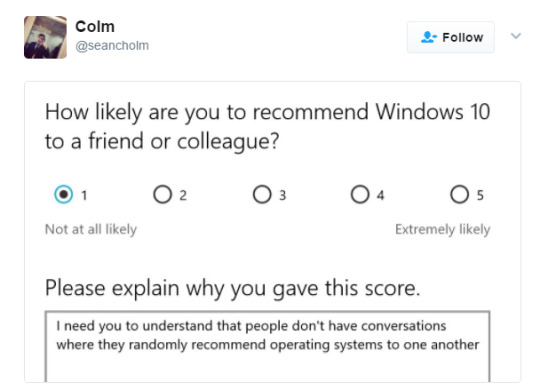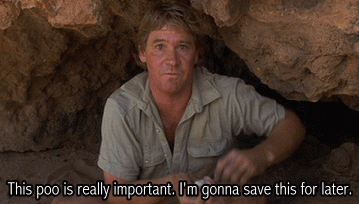To be nobody but yourself in a world which is doing its best day and night to make you like everybody else means to fight the hardest battle which any human being can fight and never stop fighting.
Don't wanna be here? Send us removal request.
Photo

There is nothing quite like sibling love!
#casio#casio g-shock#g-shock#vintage#f91w#f91-w#gshock#g-shock dw#dw5600#casio f91w#vintage watches#iconic watch#digital watch#digital#80s watch#80s#image#images#photo#photography#art#design#casio illuminator#illuminator#vintage g-shock#mobile photography#fashion#80s fashion#80s design#cool
10 notes
·
View notes
Photo

198K notes
·
View notes
Photo







Tribute to Steve Irwin, a guy who genuinely loved nature and animals.
916K notes
·
View notes
Text
How to Develop Self-Compassion
1. Acknowledge to yourself that you’re having a hard time. 2. Don’t beat yourself up for struggling. 3. Let go of any tendencies towards perfectionism. 4. Ask for support from those who care about you. 5. Make sure you enforce healthy boundaries with others. 6. Drop some commitments, and give yourself more space. 7. Take time to relax, and do the things you like. 8. Learn how to enjoy, and benefit from, solitude.
3K notes
·
View notes
Photo

Unveiling the Pancreas
Over 400 million people worldwide suffer from diabetes – a number that’s set to increase as the years go on. Diabetes occurs when the body stops responding effectively to insulin – a hormone that’s integral to regulating sugar levels in our blood. Insulin is produced in the Islets of Langerhans cells, which are present in huge numbers in the pancreas. To gain further insight into how the pancreas works as a whole, researchers created datasets by virtually colour-coding individual islets within a mouse pancreas, which has helped to map out the exact distribution and volume of the islets. The result is a detailed anatomical model showcasing the distribution of the Islets of Langerhans within the pancreas, which could play an integral role in future diabetes studies. This rendered image demonstrates the pancreas of a healthy mouse with the position of individual islets (coloured spheres), as they would appear inside the organ (grey).
Written by Katie Panteli
Image by Ulf Ahlgren, Umeå University, Sweden
Umeå University, Umeå, Sweden
Image copyright held by original authors
Research published in Nature Communications, March 2017
You can also follow BPoD on Twitter and Facebook
12 notes
·
View notes
Photo

Today marks the centennial of the birth of Ella Fitzgerald. She was born on April 25th, 1917 in Newport News, VA. She is pictured here in 1946 holding a basket of flowers while singing “A Tisket, a Tasket.” (Eliot Elisofon—The LIFE Picture Collection/Getty Images) #LIFElegends #hbd #EllaFitzgerald
898 notes
·
View notes
Photo

Launched today! Find out if you hold investments in Pfizer or GSK and use that power to help us lower the price of the pneumonia vaccine. Not an investor? You can still spread the word! #AskPharma http://afairshot.org
48 notes
·
View notes
Photo

Growing Stripes
In humans, healing broken bones is slow and painful, and lost limbs can never be regrown, yet some species have far more resilient skeletons. Zebrafish are able to entirely regenerate amputated fins, an impressive feat completed within only two weeks. Clusters of specialised skin cells split and move from the base to the tip of the fin to activate bone-producing stem cells, or osteoblasts, using a signalling molecule known as sonic hedgehog (Shh). Labelling the cells responding to Shh with green fluorescence in a developing tail fin (pictured) tracks the growing fin bones, or rays. Communication between skin cells and osteoblasts is critical to obtaining a skeleton with the appropriate pattern: when the Shh signalling pathway is blocked, fins develop incorrectly, with straight, unbranched rays. While not aiming to replicate the regenerative capacity of zebrafish in humans, understanding how Shh underpins it could inspire new ways to stimulate bone repair.
Written by Emmanuelle Briolat
Image courtesy of Kryn Stankunas
Institute of Molecular Biology, University of Oregon, Eugene, OR, USA
Research published in Development, March 2017
You can also follow BPoD on Twitter and Facebook
14 notes
·
View notes
Photo

Stick With It
This troublesome creature is Trypanosoma brucei – a tiny single-celled parasite. Transmitted by tsetse flies in sub-Saharan Africa, trypanosomes cause an unpleasant disease called sleeping sickness (African trypanosomiasis), which can be fatal if left untreated. The long pink string in this false-coloured image highlights the organism’s long, whip-like tail or flagellum. This has three uses: enabling the bug to move around; sensing the environment around it; and recognising and attaching to host cells so it can infect them. It also helps to maintain the shape of the parasite’s body, and plays a role in helping it multiply inside its host. Because the flagellum is so important to a trypanosome’s lifestyle and infectious ability, researchers are now working out ways to break the molecular connections that keep it attached to the parasite cell, with the hope of finding more effective ways to prevent or treat sleeping sickness in the future.
Written by Kat Arney
Image by Ziyin Li and Hung Quang Dang, University of Texas Health Science Center at Houston
Department of Microbiology and Molecular Genetics, McGovern Medical School, University of Texas Health Science Center at Houston, Houston, TX, USA
Image originally published under a Creative Commons Licence (BY 4.0)
Research published in PLOS Pathogens, January 2017
You can also follow BPoD on Twitter and Facebook
14 notes
·
View notes
Photo
Truly terrifying!

Happy Halloween!
52K notes
·
View notes
Quote
Don’t be friends with people you want to fuck if you’re worried about fucking up the friendship when fucking comes up.
Fiancé Dave gives some poetic boy advice to one of my friends (via adulting)
#friends#friendship#poetry#relationship#relationships#fucking#fuck#sex#people#life#love#quotes#advice
1K notes
·
View notes
Quote
There is nothing to writing. All you do is sit down at a typewriter and bleed.
Ernest Hemingway (via psych-facts)
#quote#quotes#author#books#writer#writing#typewriter#writer's block#writer's problems#motivation#ernest hemingway
14K notes
·
View notes
Note
Sure, over-testing is bad, but what about the psychological factor? Maybe the mathematical and human cost of 100 unnecessary breast biopsies is greater than that of 1 death from a stage-1 cancer we didn't screen for, but I think anyone would rather be one of the 100 women who had an unnecessary biopsy than be the one who died from a curable cancer. Isn't it worth erring on the side of over-treatment given that the psychological cost (regret) of under-treatment far exceeds that of over-treatment?
Hi! Your argument would make sense if there were no risks or potential adverse effects of testing! This is not the case. Breast biopsies, for example, incur risks of bleeding, infection, radiation exposure (if it’s the kind of biopsy that uses imaging). Furthermore, a breast biopsy that is positive might lead to additional procedures or testing that incur their own risks and adverse effects.
Let’s do a math exercise with made-up diseases and numbers. Let’s say we had an organ called the blarg and sometimes people get blarg cancer. Blarg cancer is bad and results in significant morbidity and mortality so we want to screen for it. We find a molecule that shows up in the blood of almost every single person with blarg cancer – what a great screen! We are so pumped. But we soon start to realize that sometimes it shows up in the blood of people that DON’T have blarg cancer. So some people we’re screening are showing up as positives even though they don’t have blarg cancer. But no biggie, right? It’s worth it because we’re catching people with blarg cancer we wouldn’t otherwise catch.
Let’s pause the story to take a terminology break: sensitivity is a quality measure of a test that tells us how often the test turns POSITIVE when someone has the disease you’re looking for. If a test is highly sensitive, this means that if you have the disease, the test is going to turn positive almost every single time. This means you’re catching basically everyone with the disease. So the screen for blarg cancer I described above is highly sensitive, because I said the molecule “shows up in the blood of almost every single person blarg cancer.” Another way of thinking about it is that a test with very high sensitivity has a very low false negative rate. People who get a negative test result can rest assured they almost certainly do not have the disease.
Another quality measure of a test is the specificity, which measures how many people WITHOUT the disease will have a NEGATIVE test. We call it specificity because the question we’re asking is: is this test specific to the disease we’re looking at? Will it turn negative every time someone doesn’t have the disease, or are there some cases in which it turns positive for a reason other than the disease in question? A highly specific test means if you get a positive test, you can be pretty sure that this person has the disease. In other words, a test with very high specificity has a very low false positive rate. The screen for blarg cancer I described above doesn’t have great specificity, because I said, “sometimes it shows up in the blood of people that DON’T have blarg cancer.”
Sensitivity and specificity are measures that we calculate for EVERY TEST we do in medicine! We often think of our tests as arbiters of truth-in-diagnosis, but that is a really dangerous myth. Unfortunately we just don’t have magic diagnosis-revealer wands we can wave over patients to determine if they have diseases we’re looking for, and we need to be really careful not to think of the diagnostic tests we do as diagnosis-revealer wands, because it can cause a lot of problems, some of which I’m going to outline now.
Alright, back to our blarg cancer screening test. Let’s say that our test has a sensitivity of 95%. Wow! A+! Such a good sensitivity. That means that if 100 people have blarg cancer, 95 of them will test positive. You’re catching almost everyone.
Let’s say the test has a specificity of 80%. That’s not so bad, right? Still a B? But definitely not as good as the sensitivity. It means that of 100 people that don’t have blarg cancer, 80 of them will have a negative test. In other words, 20 people out of 100 without blarg cancer will test positive.
Let’s figure out what all these numbers mean. Blarg cancer has a prevalence of around 1%. This means that if you picked 100 people from a crowd, 1 of them would have blarg cancer. If your hospital has a patient population of 100,000 then 1000 have blarg cancer. The sensitivity of your test means that if you start screening you will catch 1000*0.95 = 950 of the people with blarg cancer. The specificity of your test means that of the 99,000 people that don’t have blarg cancer, 99,000*0.8 = 79,200 of them will have a negative test. But – uh oh – that means 99,000-79,200 = 19,800 will have a positive test even though they don’t have blarg cancer.
Now most people see that number and say to themselves, “Well, it’s not that big of a deal. There’s a psychological discomfort but at least we’re catching the people that do have cancer!” But it’s not so simple. What do you do after you have a positive screen for blarg cancer? You have to do something about it! So you remove their blargs. All the positive screens, or 19,800 + 950 = 20,750 people have surgery to get their blargs removed.
Surgery complication rates for blargectomy are about 20%. That’s any complication, including anything from a minor infection of the site to something more serious. Perioperative mortality rates are much lower, 2%. That’s a really low rate (good job, surgeons!), so it makes you not worry too much. It includes people that died in surgery, died shortly after surgery, or died for a reason directly related to their surgery (e.g. sepsis from surgical infection). So let’s do the math. If 19,800 people got surgery that didn’t really need it (false positives), then 0.02*19,800 = 396 people are going to die from complications of a surgery that they didn’t need.
Well, you think, that really sucks. But we did surgery on 950 people that really needed it! But wait a second – surgery isn’t always effective. Cancer really sucks, and even when we do surgery for blarg cancer, it’s only effective in the long run 30% of the time. Surgery saves the lives of 30% of people with blarg cancer, so you saved 950*0.3 = 285 people.
So think about that. You saved 285 people, but you killed 396. Still want to do that test?
And that’s not taking into account a whole host of other factors, like lead-time bias, complications of surgery that aren’t fatal but are life-altering, and the mental health implications.
“But Monica,” you’re probably thinking, “Blarg cancer and all those numbers are made up and this is a totally hypothetical scenario.” Yes, I made this example up, Anon, but it’s a teaching example that reflects REAL LIFE EXAMPLES. We have learned this lesson time and time again. Read up on PSA screening, CA-125 screening, and dementia screening. This lesson is the reason we only screen smokers for lung cancer. This lesson is the reason mammography for breast cancer screening is undergoing so many changes in recommendations.
“Okay, Monica, I’m convinced. So should we stop screening then?” NO!! That’s not what I’m saying at all! There are plenty of screening tests that have held up under scrutiny and proven themselves to be effective and worth potential adverse effects. The medical community currently holds up the pap smear as an example of a good screening test, with high sensitivity and high specificity, with a high enough prevalence of disease to make it worth it, with the potential to save lives if caught earlier, and with a lower rate of adverse effects.
Cancer sucks. It takes so many lives from us and results in so much suffering and tragedy. Please don’t think that I’m not taking cancer seriously, or trivializing it. But we can do harm too. And we do. We HAVE to be careful in what we do as a medical community. We have to take that seriously.
So what’s the message then? The message is that as a future physician it’s your job to understand that everything you do incurs risk and that you need to use the information you have to determine when that risk is worth it and when it isn’t.
Basically, use your brain. Do the math. Be a critical thinker. IT’S YOUR JOB. Your patients need you!
506 notes
·
View notes
Photo

Obfuscation: how leaving a trail of confusion can beat online surveillance | Technology | The Guardian
Shifting to digital, noise can be destructive or productive, and it can scale dramatically. This is the landscape that a 21st-century handbook must confront. Platforms and channels can be swamped by code that mimics and distorts human communication – bots, like-farmers, decoys and hydras. Other tools, like the anonymous Tor browser, the Guardian’s SecureDrop, or stylometric obfuscation (to disguise authorship), can be mission-critical for dissidents. And there is an ever growing demand for consumer-focused privacy-preserving apps, like CacheCloak, which hides your mobile location in a spaghetti map of plausible trails, or FaceCloak, which gives a layer of control over personal data within Facebook.
Most of us, most of the time, use immensely popular technologies without masks or noise. We post in what you might call corruptible silence. On Facebook, Instagram, Twitter and Google, we document our personal spaces, our frailties, our desires, questions and answers. We are naked, exposed and eminently traceable, now and into the future, by an ever-increasing range of data-hungry agents. To concerned citizens living this reality, and to thoughtful designers of technology, what Brunton and Nissenbaum offer is a compelling moral defence and some ready-to-hand tools for a small, distributed revolution of resistance.
86 notes
·
View notes
Text
Temple of the Dog - Hunger Strike
hey buds - if u could show me one GREAT song u think i may not have heard, what would it be? i’m talking near-perfect songs, not just “cool”/on blogs right now or anything.. could be an old song too. fire away.
xo
2K notes
·
View notes
Text
May I Post This On My Blog?
As I sit here, on my bed, listening to some new random song that I hope not to get sick of. Just like so many days before this one I hope, I wish and I wonder. I listen I hear and I remember. I lie face up on my not so neatly made bed, loving the soft warm sheets and pillows against my skin. I stare up at the ever changing square of sky in my ceiling and breath in, the ever so slightly wet air of the French countryside that constantly flows through the house via open windows. Throughout this beautiful story, in my mind there is a hurricane. Wind and rain that has been there so long I don't even know it is going to leave. But then I come to think that maybe it isn't so bad. Maybe the questions and darkness that come with the storm are just a right of passage.
The moments spent hoping for easier days, wishing for things to be less complicated, wondering how much time all of this will take. The minutes and hours spent listening to other peoples noise, hearing their troubles and remembering our own. The days waiting for those things to stop mattering. The months and years thinking about weather it us actually going to be okay. Those things are just part of everyone.
And yet there are times when all that stops being important. Moments when you forget the storm, the people, the sheets and the sky. Minutes when the thoughts disappear and the pen just writes on its own again. Seconds when everything means nothing just because that song you've has on a loop for the past half hour is just perfect, just what you needed and it really is just so brilliant that you hope to never get tired of the way it sounds. The infinities spent trying to remember what you were going to say before that song started. What ending sentence you had lined up that fit because you were so convinced that it was just right for right now. When really it did not even matter. You might come to think that it was the most important thing because you wanted to get that final impression just right. However it didn't quite sit right any more. Because everything had moved, everything had already changed.
There comes a time in life where one needs to right their own quotes, listen to their own music, like their own things and be their own inspiration. But we must know and understand that that quote might not be your favourite forever, even though you remember ever word as if your life depended in it. We must stop taking life so seriously, stop worrying about the change and just accept that those beautiful moments when everything fits together just right, won't last forever. But that one simple song that made you feel so safe and calm will play for as long as you want it to if you can remember just how it sounded. If you can remember the good things, the seemingly perfect things that didn't even matter then you know that everything is going to be all right.
- E.F.
1 note
·
View note
Photo

20 February 2015
Spotlight on Sperm
Infertility can be caused by sperm that are unable to swim because they lack a common enzyme called cyclic AMP, preventing them from beating their tail-like flagella. In a laboratory experiment, male mice with this condition were genetically engineered so that their sperm produced another type of enzyme, bPAC. This is normally produced by a type of soil bacteria and has the remarkable property of stimulating cyclic AMP production when activated by light. Pictured is a mouse sperm whose tail has burst back into life – the false colours showing its movements – after being exposed to blue light. Whether this technique has applications for the treatment of human infertility remains to be seen – but it is certainly a triumph for optogenetics, the emerging science of modifying cells so they can be controlled with light.
Written by Mick Warwicker
—
Image by Dagmar Wachten and colleagues
Center of Advanced European Studies and Research, Germany Originally published under a Creative Commons Attribution license (CC-BY 3.0) Research published in eLife, January 2015
—
You can also follow BPoD on Twitter and Facebook
83 notes
·
View notes